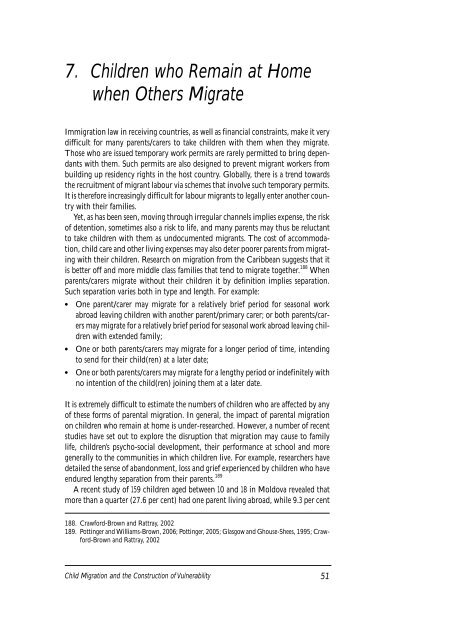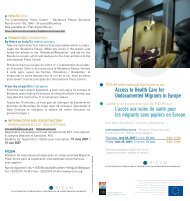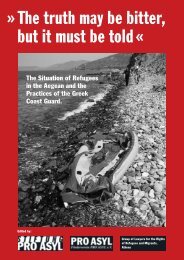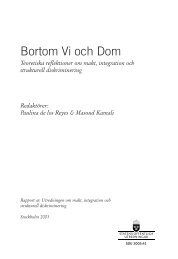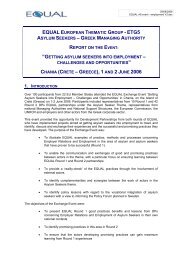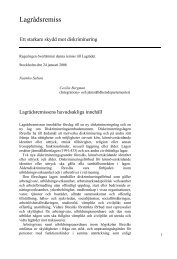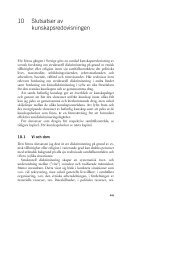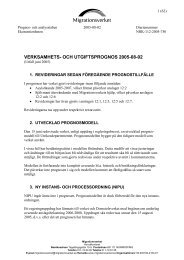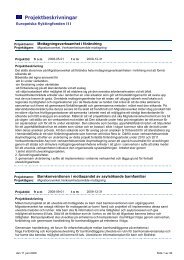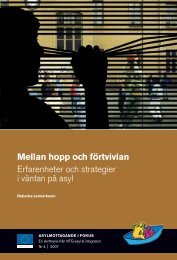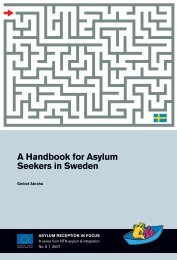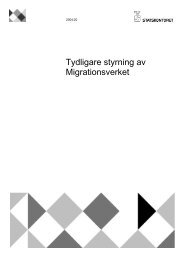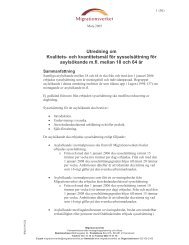and the Construction of Vulnerability - Child Trafficking
and the Construction of Vulnerability - Child Trafficking
and the Construction of Vulnerability - Child Trafficking
You also want an ePaper? Increase the reach of your titles
YUMPU automatically turns print PDFs into web optimized ePapers that Google loves.
7. <strong>Child</strong>ren who Remain at Home<br />
when O<strong>the</strong>rs Migrate<br />
Immigration law in receiving countries, as well as financial constraints, make it very<br />
difficult for many parents/carers to take children with <strong>the</strong>m when <strong>the</strong>y migrate.<br />
Those who are issued temporary work permits are rarely permitted to bring dependants<br />
with <strong>the</strong>m. Such permits are also designed to prevent migrant workers from<br />
building up residency rights in <strong>the</strong> host country. Globally, <strong>the</strong>re is a trend towards<br />
<strong>the</strong> recruitment <strong>of</strong> migrant labour via schemes that involve such temporary permits.<br />
It is <strong>the</strong>refore increasingly difficult for labour migrants to legally enter ano<strong>the</strong>r country<br />
with <strong>the</strong>ir families.<br />
Yet, as has been seen, moving through irregular channels implies expense, <strong>the</strong> risk<br />
<strong>of</strong> detention, sometimes also a risk to life, <strong>and</strong> many parents may thus be reluctant<br />
to take children with <strong>the</strong>m as undocumented migrants. The cost <strong>of</strong> accommodation,<br />
child care <strong>and</strong> o<strong>the</strong>r living expenses may also deter poorer parents from migrating<br />
with <strong>the</strong>ir children. Research on migration from <strong>the</strong> Caribbean suggests that it<br />
is better <strong>of</strong>f <strong>and</strong> more middle class families that tend to migrate toge<strong>the</strong>r. 188 When<br />
parents/carers migrate without <strong>the</strong>ir children it by definition implies separation.<br />
Such separation varies both in type <strong>and</strong> length. For example:<br />
● One parent/carer may migrate for a relatively brief period for seasonal work<br />
abroad leaving children with ano<strong>the</strong>r parent/primary carer; or both parents/carers<br />
may migrate for a relatively brief period for seasonal work abroad leaving children<br />
with extended family;<br />
● One or both parents/carers may migrate for a longer period <strong>of</strong> time, intending<br />
to send for <strong>the</strong>ir child(ren) at a later date;<br />
● One or both parents/carers may migrate for a lengthy period or indefinitely with<br />
no intention <strong>of</strong> <strong>the</strong> child(ren) joining <strong>the</strong>m at a later date.<br />
It is extremely difficult to estimate <strong>the</strong> numbers <strong>of</strong> children who are affected by any<br />
<strong>of</strong> <strong>the</strong>se forms <strong>of</strong> parental migration. In general, <strong>the</strong> impact <strong>of</strong> parental migration<br />
on children who remain at home is under-researched. However, a number <strong>of</strong> recent<br />
studies have set out to explore <strong>the</strong> disruption that migration may cause to family<br />
life, children’s psycho-social development, <strong>the</strong>ir performance at school <strong>and</strong> more<br />
generally to <strong>the</strong> communities in which children live. For example, researchers have<br />
detailed <strong>the</strong> sense <strong>of</strong> ab<strong>and</strong>onment, loss <strong>and</strong> grief experienced by children who have<br />
endured lengthy separation from <strong>the</strong>ir parents. 189<br />
A recent study <strong>of</strong> 159 children aged between 10 <strong>and</strong> 18 in Moldova revealed that<br />
more than a quarter (27.6 per cent) had one parent living abroad, while 9.3 per cent<br />
188. Crawford-Brown <strong>and</strong> Rattray, 2002<br />
189. Pottinger <strong>and</strong> Williams-Brown, 2006; Pottinger, 2005; Glasgow <strong>and</strong> Ghouse-Shees, 1995; Crawford-Brown<br />
<strong>and</strong> Rattray, 2002<br />
<strong>Child</strong> Migration <strong>and</strong> <strong>the</strong> <strong>Construction</strong> <strong>of</strong> <strong>Vulnerability</strong><br />
51


